Istanbul’s second Design Biennial maps the city’s changing landscape and creative future
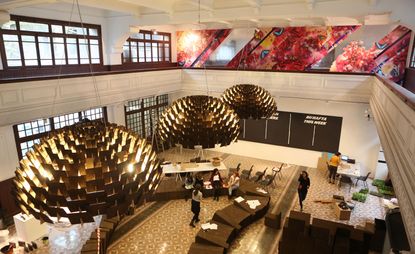
As the Design Biennial returns to Istanbul for its second edition, the capital of Turkish culture is hosting a glut of projects selected by this year's appointed head, Zoë Ryan. The chair and curator of the Art Institute of Chicago has worked with associate curator Meredith Carruthers on the six-week event, held over five floors of the Galata Greek Primary School and at several locations across the city.
Ryan's curatorial starting point was a statement made by French poet Paul Valéry in 1937 – 'The future is not what it used to be' – which she found just as relevant today as 80 years ago. But her inspiration wasn't only borne from the significance of time; geography played a role. 'The city is going through a deep transformation,' says the British-born curator, 'so it is fitting to be here talking about the future and the changing of ideas.' What attracts her to design biennials, she explains, is their nature to look at the future, a concept borrowed from art biennials. The fact that they are detached from institutions and run independently allows for a proper collision and exchange of ideas.
To answer Ryan's question – 'What is the future now?' – her showcase develops through four departments, inspired by academies and retail spaces. It is intended to be a personal and physical journey through the building. The circulation system, devised by Istanbul design agency Superpool in collaboration with Project Projects, guides visitors through the departments in a crescendo of complex ideas and solutions.
The journey through the neo-classical building starts with the Personal Department, an overview of everyday issues pertinent to our personal lives. Further up, the Norms and Standards Department includes a series of projects questioning the status quo, inviting visitors to rethink daily rituals. Perhaps the most enticing of the four departments, it allows visitors to interact with a variety of installations, from a punching print machine to a nap room.
The Resource Department follows with a series of practical installations that explore odors and gastronomy and includes a reading room designed by Istanbul-based duo Can and Asli Altay.
The tour ends with the Civil Relations department, where stronger social themes of architecture, ethics and urban and rural landscapes are explored and illustrated. 'The scope of the biennial is open ended,' says Ryan. 'It is meant to encourage discussion and debate and to understand what's going on in the here and now.'
The city seems to have responded positively to this message, with local galleries partaking in the design fest by exhibiting the best of Turkish and international design. The small apartment-gallery Rodeo dedicated its space to wooden shelves and lights by Cyprus-born, London-based designer Michael Anastassiades.
Nearby at Istanbul '74 is a mind-blowing collection of 3D-printed lamps by Turkish-born, Chicago-based designer Defne Koz. Combining local craftsmanship with design, European initiative Glass is Tomorrow showcases the fruits of a workshop held in Denizli, southwest Turkey, with projects by Autoban and Nigel Coates, among others.
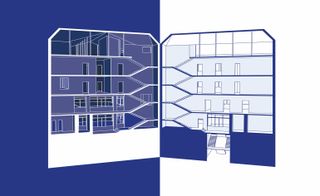
The circulation system, devised by Istanbul-based design agency Superpool in collaboration with Project Projects, guides visitors through the various departments by sectioning the building in two vertical areas
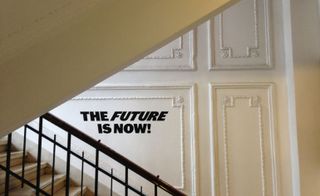
The building's neoclassical architecture is adorned with stenciled slogans, questions and manifestos in English and Turkish by the participating designers
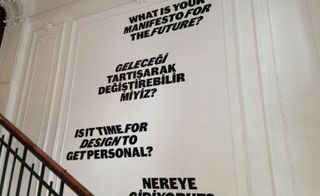
The font, part of the design by Superpool and Project Projects, has different inclinations denoting future or past

In the Personal Department, a collection of five fictional survival kits by Chicago designers Jessica Charlesworth and Tim Parsons is titled 'New Survivalism'. It explores personality types in a post-disaster society, from the 're-wilder' to the SETI Reserves Member (pictured). The project asks the question: 'How will you pack for the future?'
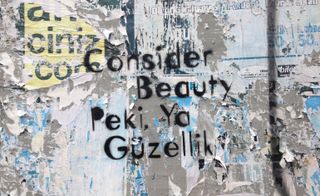
Studio Frith, in collaboration with Thirteen Ways, launched the bilingual campaign 'Consider Beauty' with a manifesto stencilled across the city, guerrilla-style

In the Norms and Standards Department, German fashion collective Bless presents the 'N.41 Workoutcomputer', an installation that blurs the boundaries between in-office and remote work. It allows visitors to punch in messages that are then splayed on the walls of the biennial HQ
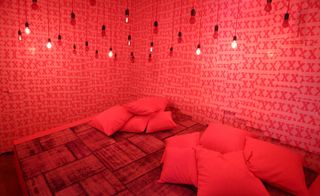
Juergen Mayer H encourages visitors to reconsider the importance of sleep and the taboo status of the nap. His 'Nap Gap' is a cosy fuchsia-painted room with background 'pink noise'

'Toward a Universal Manifesto', by American duo Emmet Byrne and Alex Dearmond, is a collection of printed artefacts exploring the manifesto as a tool for imagining the near future
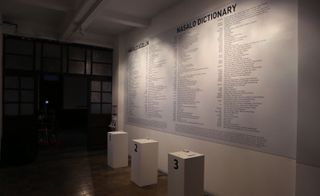
In the Resource Department, Norwegian chemist and linguist Sissel Tolaas presents 'Nasalo', a wiki dictionary of odours that allows visitors to contribute new words for the city's scents
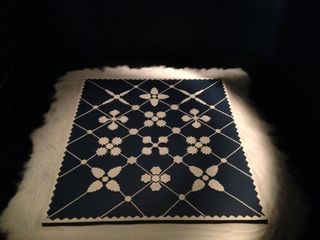
'This Sea of Sugar Knows no Bounds', by Tasha Marks of AVM Curiosities, combines Turkish and British sugar traditions. The piece invites visitors to rethink sugar's bad reputation and give it a positive connotation

'Knowledge - Tools - Memory' by Austrian studio Mischer'Traxler displays functional tools with operating instructions and asks the question 'Does the knowledge of production change the value of the resulting product?'

What would society look like if we assigned out a central restoration role? This is the question asked by Amsterdam collective Repair Society
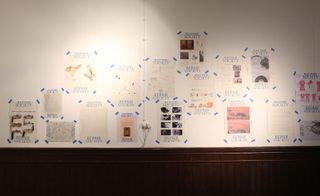
Throughout their installation, the designers explore different points of view on design, use and reuse of everyday objects
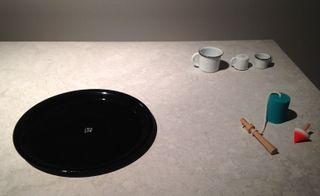
Mexican designer Moises Hernandez travelled through his native country for inspiration for his collection of domestic tools. Called 'Diario' (a word meaning both 'diary' and 'everyday'), it highlights traditional craft and industrialised production
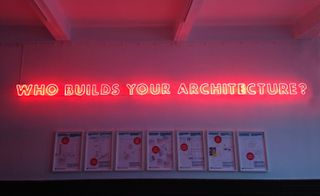
In the Civil Relations Department, the international architect collective WBYA? poses the question 'Who builds your architecture?', analysing the role of engineers, suppliers and craftsmen in modern construction. 'The scope of the biennial is open ended,' says biennial curator Zoë Ryan. 'It is meant to encourage discussion and debate and to understand what's going on in the here and now'
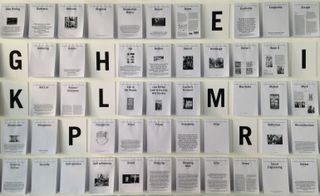
Throughout the exhibition, visitors are encouraged to collect and share thoughts about design manifestos

Off-site at Istanbul '74's Galatasaray home, artist Defne Koz presents 'Solid Air', a mindblowing collection of 3D-printed lights

The geometric pieces explore the aesthetic potential of 3D printing combined with LED light sources. They mark the debut of the Oneoffinfinity brand, a collaboration between Defne Koz and Demet Muftuoglu Eseli of Istanbul '74
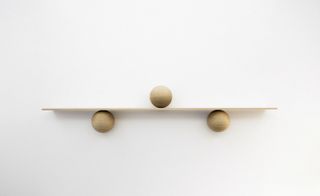
At Rodeo Gallery, London-based Cypriot designer Michael Anastassiades presents 'General Illuminations', a small collection of wooden shelves and lights inspired by classic pinball games
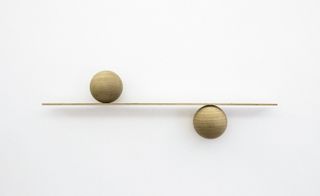
Anastassiades' poetic oak pieces suggest a delicate hand on an elegant material
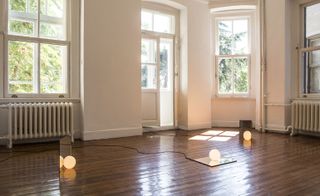
One room at Rodeo is dedicated to lamps that play with the light and mirror
Wallpaper* Newsletter
Receive our daily digest of inspiration, escapism and design stories from around the world direct to your inbox
Rosa Bertoli was born in Udine, Italy, and now lives in London. Since 2014, she has been the Design Editor of Wallpaper*, where she oversees design content for the print and online editions, as well as special editorial projects. Through her role at Wallpaper*, she has written extensively about all areas of design. Rosa has been speaker and moderator for various design talks and conferences including London Craft Week, Maison & Objet, The Italian Cultural Institute (London), Clippings, Zaha Hadid Design, Kartell and Frieze Art Fair. Rosa has been on judging panels for the Chart Architecture Award, the Dutch Design Awards and the DesignGuild Marks. She has written for numerous English and Italian language publications, and worked as a content and communication consultant for fashion and design brands.
-
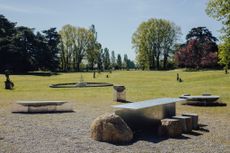 Alcova 2024 offers up contemporary independent design in historical domestic backdrops
Alcova 2024 offers up contemporary independent design in historical domestic backdropsAlcova 2024 moved to Varedo to take over the spaces of Villa Bagatti Valsecchi and Villa Borsani (on view until 21 April)
By Sujata Burman Published
-
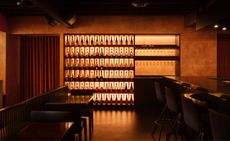 Ama Bar, in Vancouver, is sexy and a little disorienting
Ama Bar, in Vancouver, is sexy and a little disorientingAma Bar features ‘Blade Runner 2049’-inspired interiors by &Daughters
By Sofia de la Cruz Published
-
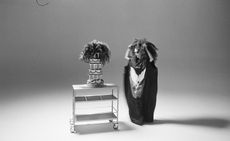 Kembra Pfahler revisits ‘The Manual of Action’ for CIRCA
Kembra Pfahler revisits ‘The Manual of Action’ for CIRCAArtist Kembra Pfahler will lead a series of classes in person and online, with a short film streamed from Piccadilly Circus in London, as well as in Berlin, Milan and Seoul, over three months until 30 June 2024
By Zoe Whitfield Published